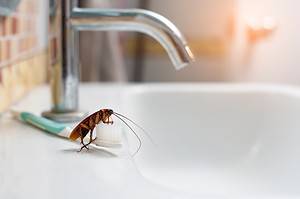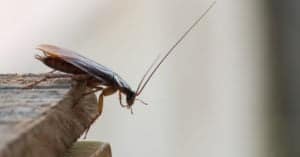You may be surprised to discover that cockroach season is all year round. But this doesn’t mean the story ends there – in fact, it’s only just getting started. Various species of these pesky critters tend to come and go at different points throughout the calendar, as you’ll find out in this post.
Before we examine the rampant cockroach species that populate Florida, let’s look at what these pests resemble and how they behave. American and German roaches are two of the most commonly sighted types across North America; however, other varieties also call this region home.
Understanding their appearance and behavior is essential to recognize them upon first contact with one in your living space.
What is a Cockroach?
Cockroaches are usually flat, oval-shaped insects with six spiny legs and long antennae. They’re classified under the order Blattodea. The cockroach lineage is more than 300 million years old. Currently, there are 4500 cockroach species; out of these, 36 are linked to human habitats.
Generally, the latter species are notorious pests at home. Roaches are typically brown or black and sometimes can be reddish brown or tan. Even though they have wings, not all species can fly. They adore unclean environments as they can feed on a wide range of organic matter and thrive in warm and humid conditions, making Florida a perfect spot.
Roaches are creatures of the night. They love to roam and hide in dark, damp places during the day and come out to feed at night. These pesky bugs are pretty fast, displaying impressive speeds and agility.
They’ll scuttle quickly across the floor and even scale walls. Their sense of smell is amplified; hence, they can smell meals from afar. Cockroaches are a pain to control once they set up base in your home or building. Moreover, roaches easily reproduce and quickly adapt to changing environments.
Cockroach Season in Florida
In Florida, you get cockroaches yearly because of the warm and humid climate. However, their activity levels vary depending on the season and climatic conditions. Below is an overview of the cockroach season in Florida from January to December.
- January – March: During winter and early spring, the activity levels of cockroaches remain low. During this period, you’re more likely to find them indoors as they seek shelter from the cold.
- April – June: This is the general mating season for cockroaches, and their numbers will start to increase as they search for food.
- July – September: This is when the temperatures peak in Florida, which means more cockroaches. These pests adore warm and humid environments, so you’re likely to spot them roaming outdoors for food during this season.
- October – December: As winter approaches and temperatures drop again, roaches will look for warmth indoors. Hence, they’ll seek shelter in your home. This is the time to be extra vigilant.
Remember that you can find cockroaches all year round in Florida, so it’s essential to be aware of their behavior and presence. Taking the necessary steps to control and prevent roaches from invading your home or building will help keep these pests at bay throughout the year.
Cockroaches in Florida
Florida’s temperature experiences minimal changes throughout the year, making the state a roach magnet. But when it does get cooler, some roaches don’t take it well. And this is the case during rainy seasons, the coldest in Florida. You can’t tell as the temperature doesn’t dip so low in Florida, especially if you’ve never been to the state.
When it rains in Florida, roaches seek shelter in buildings. Also, when there are high temperatures, cockroaches will seek refuge in cooler and air-conditioned buildings. While these pesky creatures are around all year, you can expect higher numbers during the summer and rainy seasons.
Florida is home to several roach species. The three most prominent cockroaches include the American, German, and Brown-banded cockroaches. Other notable species include the Australian and Florida wood cockroaches. Each of these roaches appears different and exhibit distinct characteristics and habitat preferences. Let’s examine the five cockroach species found in Florida.
American Cockroach

The American cockroach can be easily identified by the figure 8 pattern on the back of its head.
©iStock.com/ViniSouza128
Also referred to as palmetto bugs, this reddish-brown cockroach is among the largest in Florida. An adult American cockroach’s size varies from one and a half to two inches long.
One unique identifier of American cockroaches is the figure 8 pattern on the back of the head.
You can locate them in drains, sewers, and basements. While indoors, you can find them in damp areas such as bathrooms, kitchens, or places with signs of food debris or crumbs.
But they tend to remain outdoors most of the time, especially near the palmetto tree. While not dangerous, they can cause allergies and even carry harmful bacteria. As such, American cockroaches can cause health issues, particularly for people with asthma and allergies.
German Cockroach
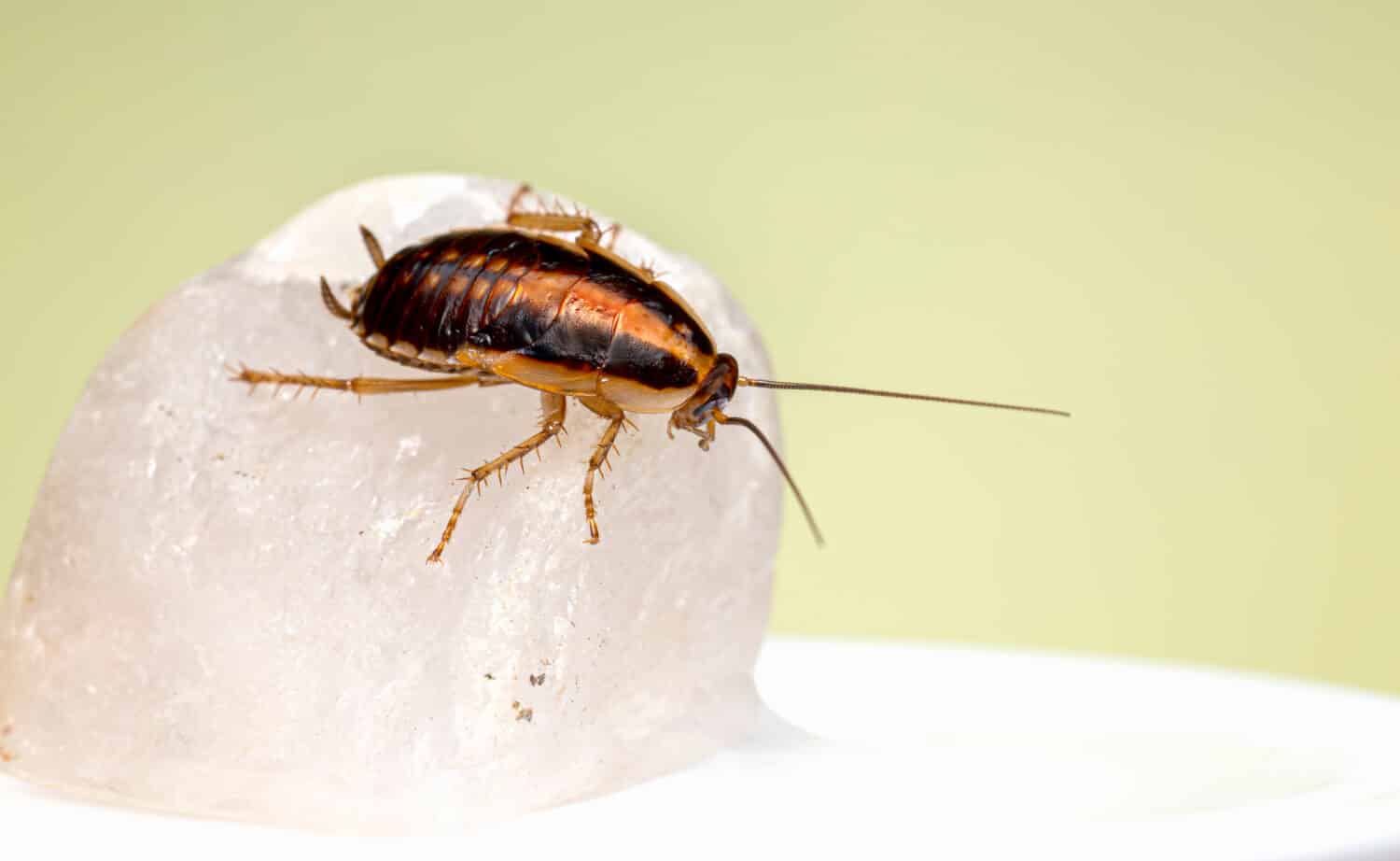
The German cockroach is light brown or tan and has two parallel stripes on its back.
©Erik Karits/Shutterstock.com
The German cockroaches are indoor roaches, smaller than their American counterparts. They average a length of 0.6 inches. German cockroaches are light brown or tan and have two parallel stripes on their backs. They’re often found in kitchen areas, bathrooms, and commercial food storage.
German cockroaches are typically nocturnal and quickly reproduce 10,000 offspring annually. They’re attracted to damp places and places with food crumbs and spills. German cockroaches transmit bacteria, including E.coli, and salmonella. Moreover, they can trigger asthma attacks and allergic reactions.
Brown Banded Cockroach
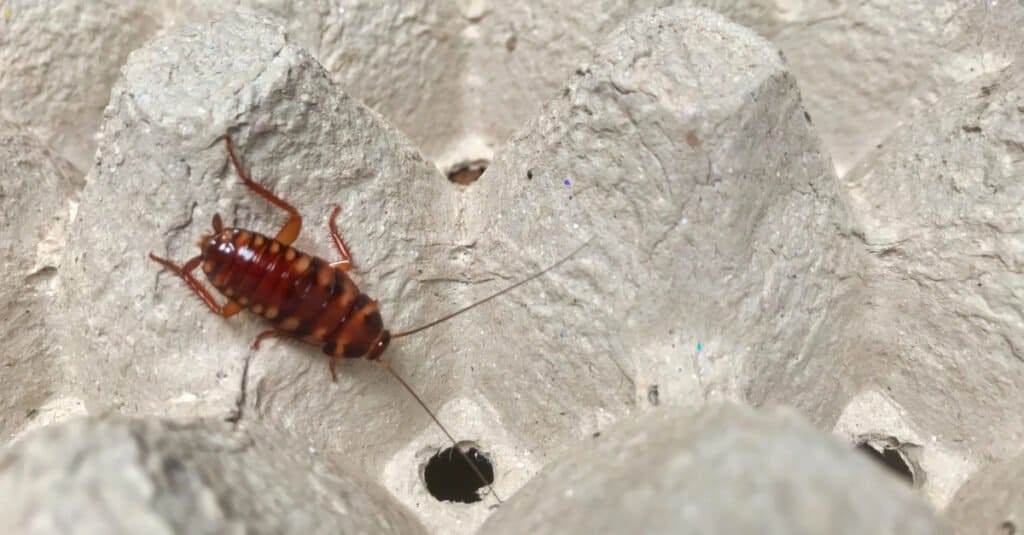
The brown-banded cockroach is named for its unique bands on its wings and body.
©Freedom my wing/Shutterstock.com
Like the German cockroaches, brown-banded roaches are small, measuring 0.5 inches long. They’re light brown or tan and have unique bands on their wings and body. They get their name from the bands across the wings and body.
Still, the species adore the indoors, infesting dark and damp places in the attic, bedrooms, etc. Brown-banded cockroaches feed on food crumbs and other food items. Primarily nocturnal, they’re attracted to warmth and moisture, especially in areas with light fixtures and refrigeration.
While brown-banded aren’t as common as the German and American cockroaches, they pose health risks. These critters carry and transmit harmful bacteria, and their droppings can trigger allergic reactions and asthma attacks.
Florida Wood Cockroach
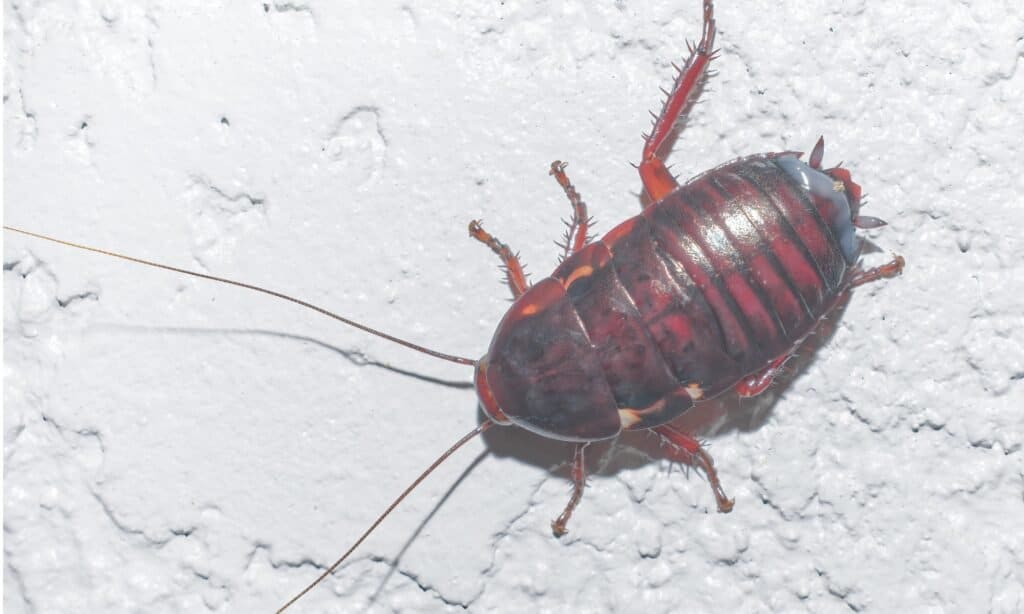
Florida wood cockroaches produce a foul-smelling spray to deter predators.
©iStock.com/Dan Rieck
Florida wood cockroaches are large and almost similar to American cockroaches. However, the difference between the two is the exoskeleton and lack of wings of the Florida woods species. Since they’re outdoor roaches, you’ll find these bugs under rocks or leaves.
To deter predators, the Florida wood cockroaches produce a foul-smelling spray. They prefer the woods — thus their names. You’ll find them breezing in the night because of their nocturnal mannerisms. While they’re outdoor bugs, you can easily find them in your home around damp places with warm climates.
Even though Florida wood cockroaches don’t transmit bacteria, they’re still a nuisance in and around the home.
The Australian Cockroach

Florida’s Australian cockroaches are reddish brown with yellow margins on the thorax and yellow streaks at their sides.
©Douglas Cliff/Shutterstock.com
Florida’s Australian cockroaches are similar in appearance to American cockroaches, though smaller, measuring 1.25 inches in length. They’re reddish brown and have yellow margins on the thorax and yellow streaks at their sides. Like the American cockroach, the Australian roaches are outdoor bugs but sometimes enter homes. They’re scavengers and feed on plants and decaying matter.
Signs of a Cockroach Infestation
When searching for cockroaches, you need to know where to start; check the narrow areas behind refrigerators, stoves, sinks, etc. There are several ways you can discover a cockroach infestation around your home. This section will highlight these visible and subtle markers.
Cockroach Dropping
Being nocturnal insects, you might fail to notice an infestation earlier on. However, there’s a common telltale sign that betrays them. Watch out for their droppings. Likewise, look out for smears accompanying the droppings in places they’ve been.
The easiest way to identify the dropping is to look for dark specs, similar to coffee grounds or clusters. If they’re meticulous in the excretion, you might have to look harder in your cabinets’ darker regions or surfaces if they were careless.
Unusual Smells
A cockroach’s identifying smell can be difficult to sense. Fortunately, we all know what kind of smell our homes have, even the older ones. Cockroaches have a musty, oily, and newly moist smell. Some species, such as the Florida wood cockroach, produce foul-smelling spray to deter predators.
Allergic reactions
Cockroaches may cause allergic reactions. When asthmatics or individuals with particular allergies start getting attacks, it could indicate an infestation. The allergens left behind cause allergic reactions.
Skin Shedding
Cockroaches don’t have bones; instead, they possess a hard case that protects them. They periodically shed off the exoskeleton (molt) to create enough space for growth. Fortunately, this provides essential clues of an impending infestation. If you come across shed cockroach skin, it’s time to act.
Eggs
Cockroaches produce oval-shaped egg cases known as ootheca. You’ll notice the egg cases behind furniture or in hidden places. Some roach species will carry their egg cases, while others will lay them where they consider their new habitat. Take quick action the minute you come across an egg sack, as one ootheca may contain as many as 48 roaches. The egg cases might be brown or red.

When searching for cockroaches around your home, keep an eye out for egg cases known as ootheca which can contain up to 45 roaches.
©Olgamir/Shutterstock.com
Live or Dead Cockroach
The most obvious way to identify a cockroach infestation is, unfortunately, the live or dead cockroaches. However, if you spot one or two, it might indicate a more significant problem ahead.
Check in narrow spaces and crevices around your home for these pests. Once you have identified a cockroach infestation, it is essential to take immediate action to prevent it from worsening. Contact a professional pest control company as soon as possible.
Feeding
Cockroaches are indiscriminate eaters and will eat almost anything they find in your home. You’ll notice some chew marks on food packaging. They’ll eat pet food left lying around or even feed from the crumbs on plates in the sink. Watch out for any signs of this to ensure you get rid of the problem quickly.
Smear Marks
Cockroaches are known for leaving smear marks in dark places or crevices on your walls. This happens when they scurry around and leave an oily residue behind them. If the area is wet, you may also notice their tracks by looking for the yellowish-brown streak marks. These smear marks can be confused with food stains. And are difficult to clean. If the smear marks are spread out, then the infestation is confirmed.
Noises
When cockroaches increase in number, they tend to make noise. This is especially true when the infestation has grown to an unmanageable number. You might hear it at night because of their nocturnal nature. People describe the sound as a soft scurrying or rustling noise behind walls and ceilings.
These are some signs that you may be dealing with a cockroach infestation. If you notice one or more of these signs, contact a pest control expert immediately so they can help you take the necessary steps to keep your home free from these pesky critters.
Preventing a Cockroach Infestation
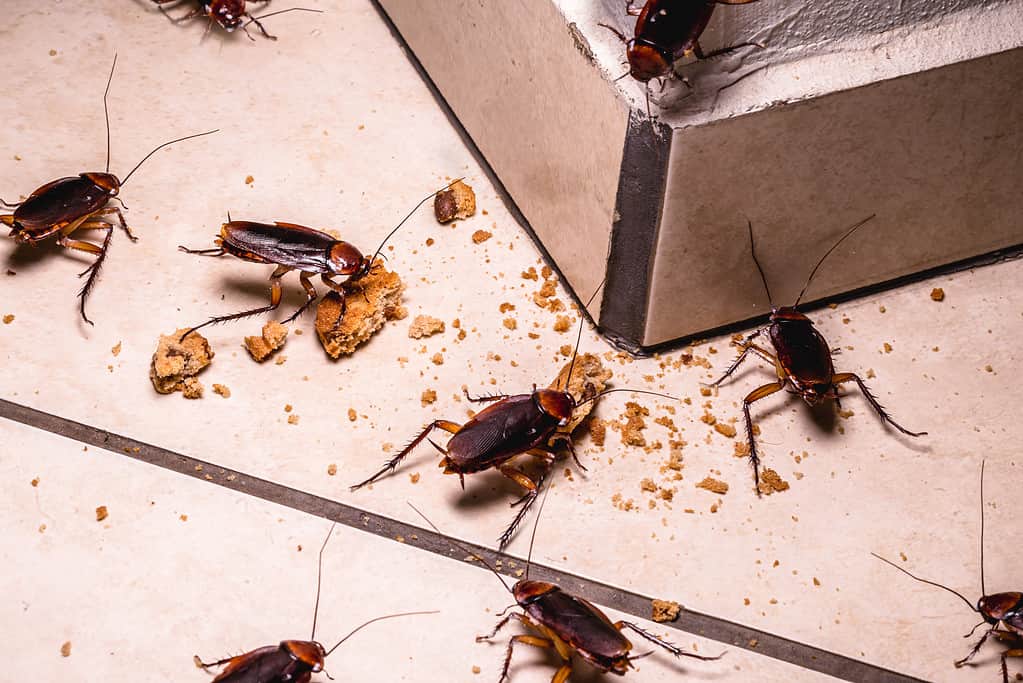
Cockroaches are attracted by food and crumbs so ensuring a clean home will help prevent a cockroach infestation.
©iStock.com/RHJ
The following are the methods you can use to prevent cockroaches infestation in your Florida home:
- Maintain a clean home: While this might seem obvious, you must thoroughly clean your home. Cockroaches are attracted by food and crumbs. When your home is free of clutter, it helps prevent an infestation. Vacuum or sweep your floors regularly and wipe down counters and surface areas after use.
- Store food properly: Cockroaches can chew through anything, including plastics and cardboard packaging. Ideally, you should store food in airtight containers made of glass or metal.
- Seal entry points: Roaches enter homes through crevices and cracks. Therefore, seal any cracks or gaps on your walls, floors, and baseboards. Use caulk to fill gaps around pipes and wiring.
- Fix leaks: Cockroaches like damp places with a continuous moisture supply. If you have leaking faucets or pipes, get them fixed. Also, dry out any stagnating water in showers, tubs, and sinks.
- Eliminate clutter: Remove piles of paper or cardboard as cockroaches like hiding in dark places.
- Use baits and traps: Baits and lures are effective in controlling cockroach infestations. Traps with food attractants help catch the roaches and monitor their activity levels.
- Call a professional: If the problem persists, hire a professional pest control service provider. Pest controllers will identify the source of the infestation and offer treatment solutions.
Ultimately, it’s easier to prevent a cockroach infestation than stop one. Preventive measures and good hygiene habits will help keep your home free of these bugs.
How To Get Rid Of a Cockroach Infestation

If you have a serious cockroach infestation it is best to hire a pest control specialist.
©Elnur/Shutterstock.com
When you have a full-blown infestation, hire a pest control specialist. Nevertheless, there are a few things you can try out before hiring them.
- Identify the cockroach: Each species might require a different treatment method. As such, you need to know what type of roaches you’re dealing with.
- Clean your home: Pay close attention to areas where cockroaches might hide, such as cabinets, behind appliances, cracks, and crevices. Use a vacuum cleaner to remove debris and thoroughly wash surfaces with soapy water.
- Apply insecticides: While using insecticides, remember to read the insertion carefully. Also, wear gloves and a mask, as some insecticides are toxic. Apply around doors, windowsills, and other entry points.
- Seal entry points: After you’ve applied the insecticide, use caulk to seal up any small openings and entry points.
If you follow these steps, your home should soon be free of a cockroach infestation. However, if the problem persists, consult a professional pest control service provider. They can provide you with complete solutions and peace of mind.
Dealing with a Cockroach Infestation Year-Round in Florida
Most people would be embarrassed because of a cockroach infestation. However, infestations are more common than people think. Living in Florida means that a cockroach infestation is right outside your door. Being aware of this fact means you should take the right steps to protect yourself from the bugs all year round.
Most cockroach activity slows down during the cooler months, particularly during the last quarter. In the hotter months, their activities tend to increase. Moreover, identifying the type of cockroach species will help you deal with them accordingly.
Follow the tips presented in this article to guard against a potential infestation. But if you’re already facing an invasion, don’t hesitate to contact a service provider for assistance with eradicating your issue.
How Many Types of Cockroaches Are There?
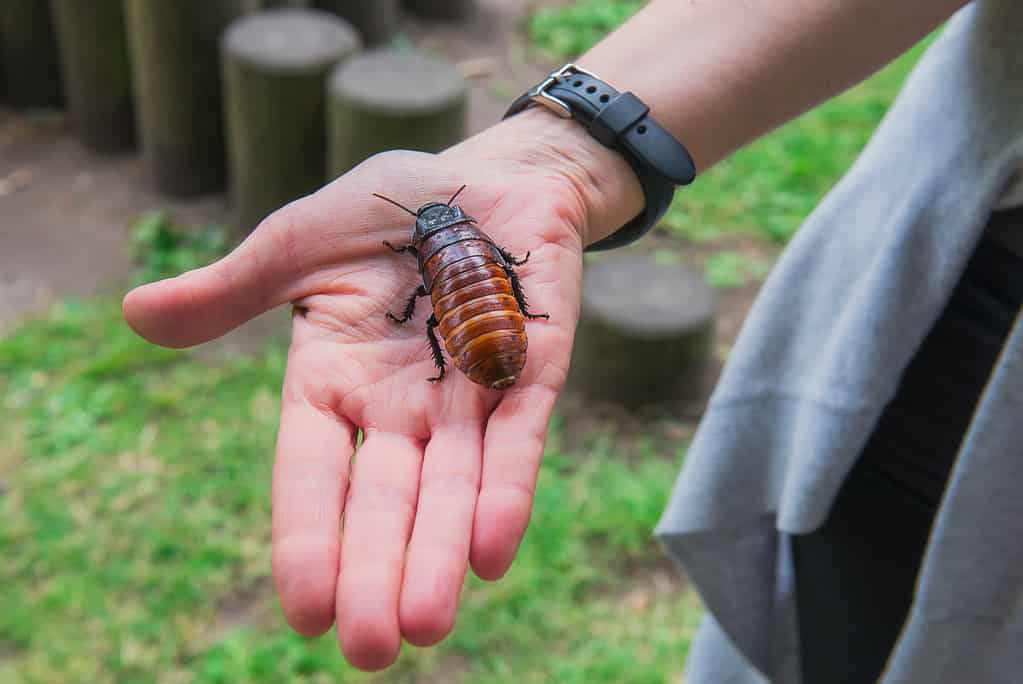
The Madagascar hissing cockroach is among the largest in the world.
©iStock.com/OKrasyuk
Seeing that there are a total of 5 different types of cockroaches in Florida alone, did it make you pause to wonder how many types there are in the U.S. or worldwide? Believe it or not, there are over 4,500 different types of cockroaches on the planet! Maybe it’s not that surprising, given the jokes surrounding how cockroaches would likely survive a nuclear holocaust or any other type of catastrophe just fine.
In the United States, there are 69 species. Types that seem to be spoken of the most include American cockroaches, German cockroaches, brown-banded cockroaches, smoky brown cockroaches, and Oriental cockroaches (often referred to as waterbugs). Other American varieties are the Pennsylvania wood cockroach, three-lined cockroach, field cockroach, and Florida woods cockroach.
If cockroaches give you the heebie-jeebies, consider the top 5 largest cockroaches in the world:
- Megaloblatta Longipennis – largest in the world at 3.5 inches long, 1.5 inches wide, and an 8-inch wingspan
- Giant Burrowing Cockroach – 3.1 inches long, weight of 1.5 ounces
- Blaberus giganteus
- Madagascar Hissing Cockroach
- Death’s Head Cockroach
The photo featured at the top of this post is © Naamtoey/Shutterstock.com
Thank you for reading! Have some feedback for us? Contact the AZ Animals editorial team.




